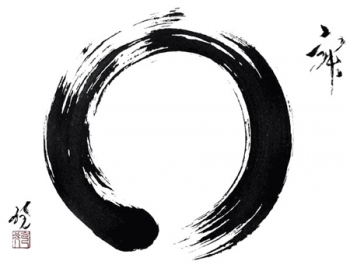“Emptiness” is a cornerstone of Buddhist philosophy and yet the term itself is not the easiest to grasp and understand, especially when approaching Buddhism for the first time. The doctrine of emptiness is common to all Buddhist traditions and it is emphasised that an insight into the state of emptiness allows access to a wider realisation of the Buddha’s teaching. However, on its own, the term “emptiness” cannot denote the true sense of the meaning intended behind its use in Buddhist sutras. The term “emptiness” itself can easily conjure up the image of a state of nothingness, hopelessness or the simple absence of everything. Buddhist commentators often recognise this ambiguity and, when discussing the term “emptiness” (Sanskrit: shunyata), ask the question: “empty of what?” The key answer they give is “empty of own-nature (Sanskrit: svabhava)”.
While the term “emptiness” is well known among Buddhists, its opposite counterpart is much less discussed, despite the fact that an understanding of “own-nature” is crucial for understanding the former. The translation “own-nature” comes from the Sanskrit term “svabhava”, which can be divided into the prefix “sva”, meaning “own” or a sense of self-possession,
and the word “bhava”, which can literally be translated as “being”, “existence” or “nature”. What is emphasised by the commentators is that “emptiness” means a lack of “own-nature”, i.e. a lack of anything which may indicate an independent existence, separate from causes and conditions. It may be helpful to illustrate the application of this definition in understanding some of the seemingly abstruse passages of the Heart Sutra. For instance, in the Heart Sutra, Shariputra states:
“...in emptiness there is no form, nor feeling, nor impulse, nor consciousness; No eye, ear, nose, tongue, body, mind; No forms, sounds, smells, tastes, ideas...”
If we take the term emptiness here at face value, it would seem that emptiness means “lack of existence” as the sutra clearly states there are no senses and no objects of the senses. However, if we keep in mind that emptiness (shunyata) means a lack of “own-nature” then a more nuanced interpretation of this passage may be gleaned. Under this interpretation of “emptiness”, the statement that there is “no form” has to be taken to mean “form has no own-nature” or perhaps more intelligibly, “form does not independently exist”. This logic of interpretation can be applied to all the negations of the Heart Sutra. Therefore, when ??riputra negates items in the Heart Sutra, he is not stating that these things do not exist but perceives with deep insight that they do not exist independently. The Heart Sutra ends its list of negations quite dramatically by refuting the independent existence of the Buddha’s teaching itself:
“There is no suffering, no origination, no cessation, no path. There is no cognition, no attainment and no non-attainment.”
This statement appears to reject the central teachings of the Buddha. For example, we all know that the Buddha taught that existence is suffering. However Shariputra here seems to be saying there is no suffering at all! Again, Shariputra is pointing to the essential truth that even the Buddha’s teaching is empty. It does not independently exist. For instance, even though the Buddha understood that existence is not satisfactory/is suffering, he did not understand this suffering to have some permanent ontological nature. Suffering is a construct of the mind and cannot be said to independently exist in any way. Therefore, ultimately, there is no suffering, it is empty. The perception of suffering is considered to be a conventional truth. The Buddha saw that suffering existed conventionally due to the ignorance of living beings. However, on an ultimate level, the Buddha also realised that we cannot talk of suffering as an independently existing thing and, in terms of being an ontological reality, it doesn’t actually exist. This simultaneous presence of conventional and ultimate truth can be best summed up by Nagarjuna in his Mulamadhyamakakarika:
“Nirvana is not essentially different from samsara,
Samsara is not essentially different from nirvana,
Between the two, also, there is not the slightest difference whatsoever.”
















